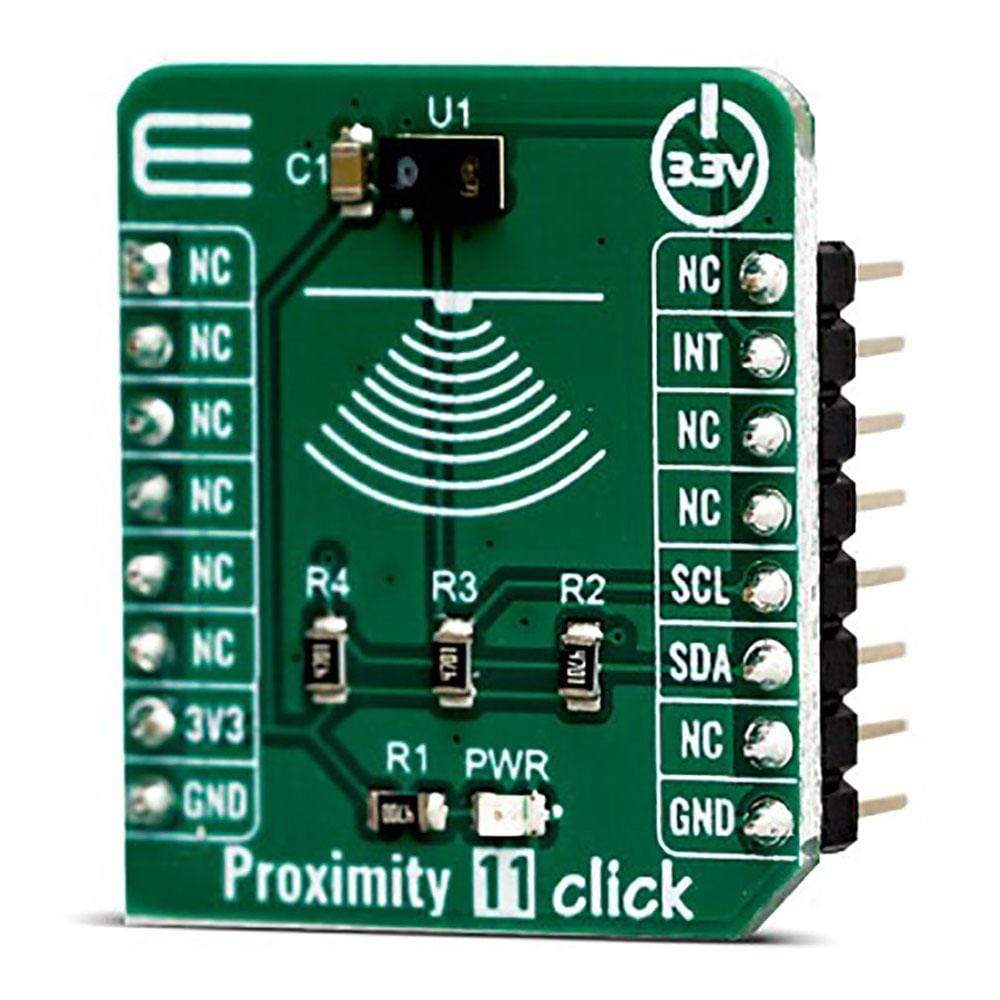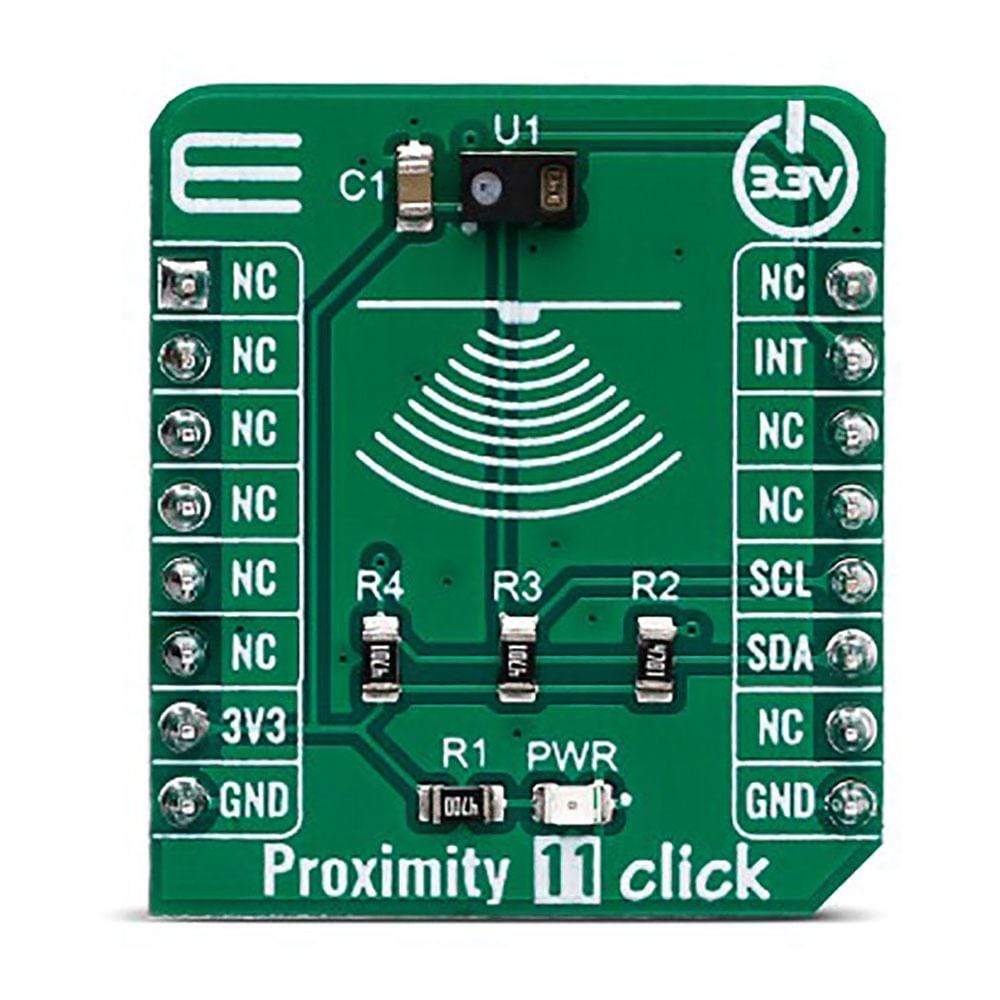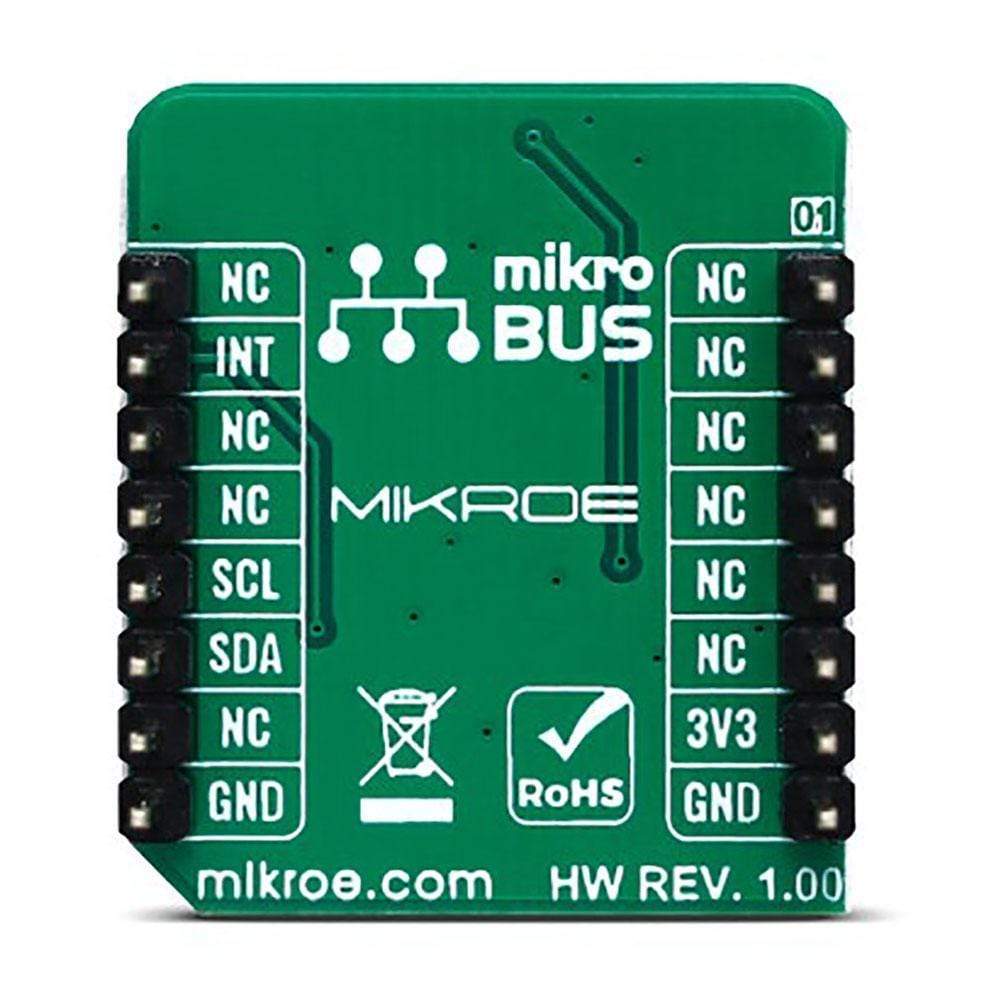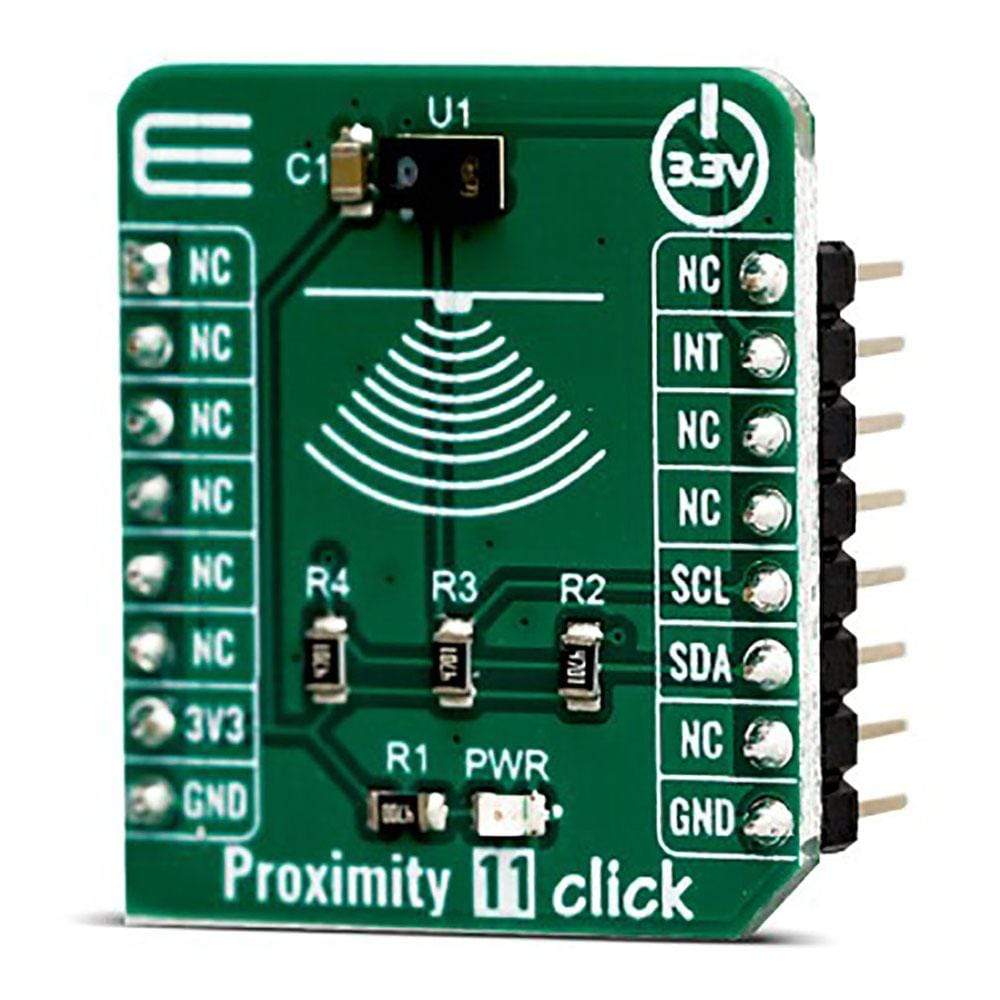
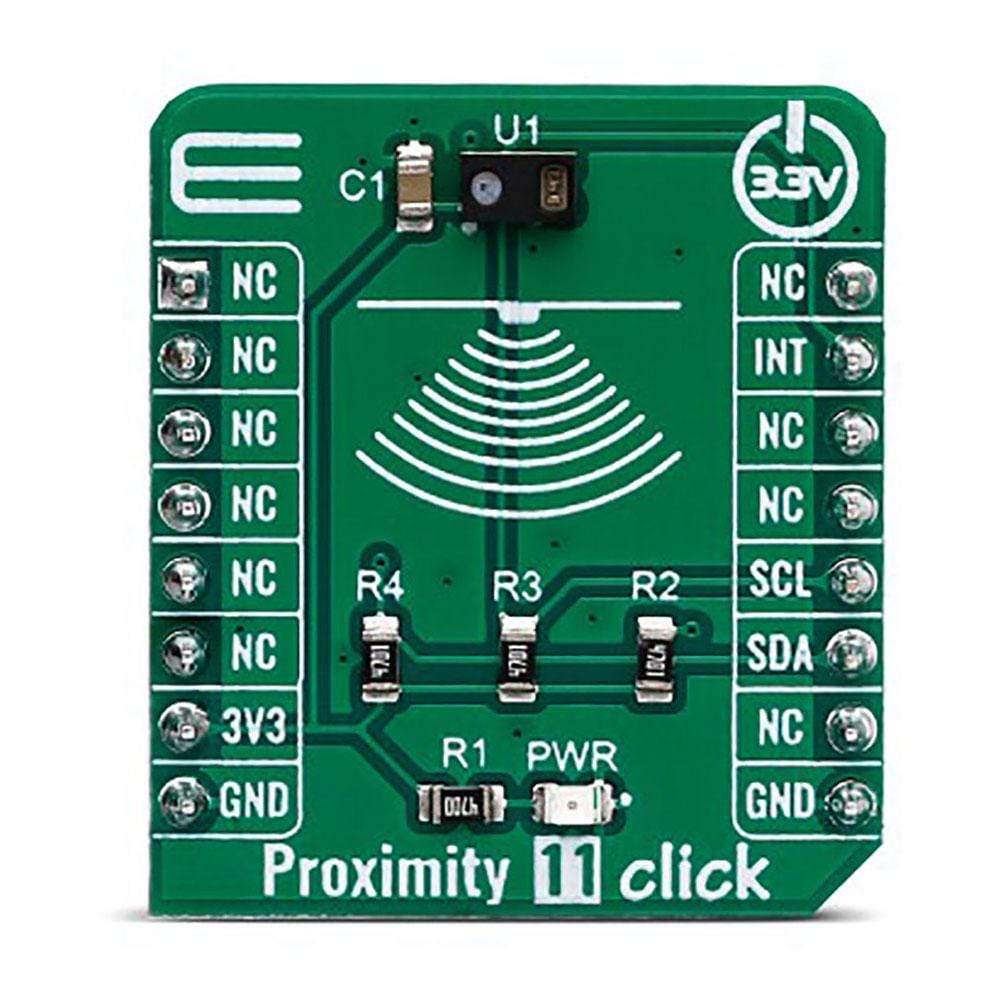
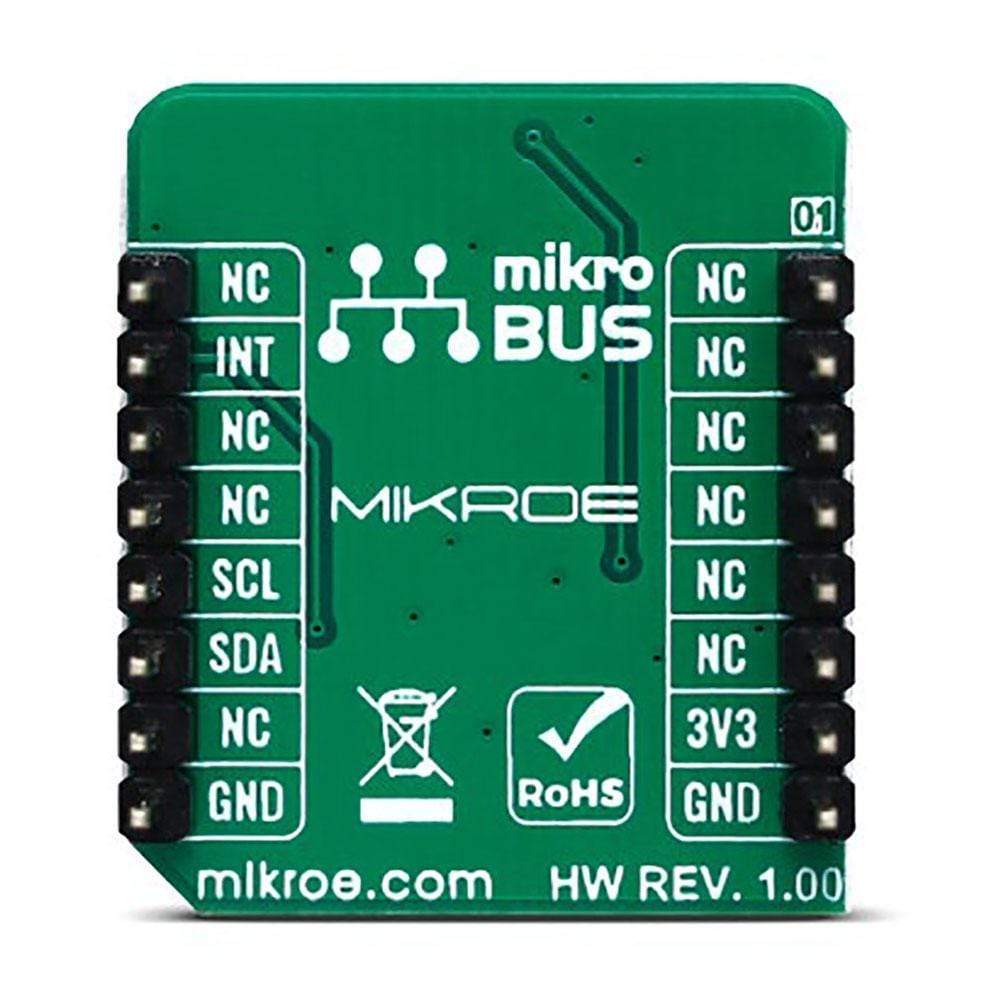
Overview
The Proximity 11 Click Board™ offers close-range proximity sensing and is equipped with the RPR-0521RS, very accurate and power-efficient proximity and ambient Light Sensor with an IrLED. It allows accurate proximity detection for a maximum distance of 100mm. The proprietary LED current driving technique eliminates the need for calibration, simplifying the design. A huge dynamic range allows ambient light sensing responses of visible and infrared light, in a variety of light conditions. An extensive interrupt engine allows for firmware optimisation.
The Proximity 11 Click Board™ is supported by a mikroSDK compliant library, which includes functions that simplify software development. This Click Board™ comes as a fully tested product, ready to be used on a system equipped with the mikroBUS™ socket.
Downloads
Le Proximity 11 Click Board™ offre une détection de proximité à courte portée et est équipé du capteur de proximité et de lumière ambiante RPR-0521RS, très précis et économe en énergie, avec une LED infrarouge. Il permet une détection de proximité précise sur une distance maximale de 100 mm. La technique de commande de courant LED exclusive élimine le besoin d'étalonnage, simplifiant ainsi la conception. Une plage dynamique énorme permet de détecter les réponses de lumière ambiante de la lumière visible et infrarouge, dans diverses conditions d'éclairage. Un moteur d'interruption étendu permet l'optimisation du micrologiciel.
Le Proximity 11 Click Board™ est pris en charge par une bibliothèque compatible mikroSDK, qui comprend des fonctions qui simplifient le développement logiciel. Ce Click Board™ est un produit entièrement testé, prêt à être utilisé sur un système équipé du socket mikroBUS™.
| General Information | |
|---|---|
Part Number (SKU) |
MIKROE-3689
|
Manufacturer |
|
| Physical and Mechanical | |
Weight |
0.017 kg
|
| Other | |
Country of Origin |
|
HS Code Customs Tariff code
|
|
EAN |
8606018716609
|
Warranty |
|
Frequently Asked Questions
Have a Question?
Be the first to ask a question about this.

